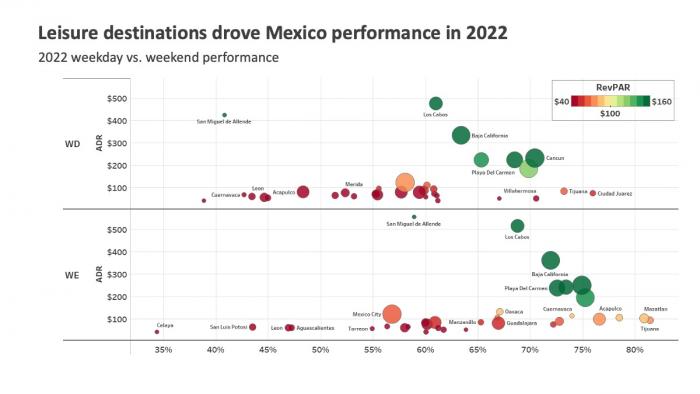Performance recovery was substantial for most of Latin America’s hotel industry in 2022, with Mexico, Central America and South America easily surpassing their pre-pandemic comparables in revenue per available room (RevPAR). While all three experienced substantial growth in room rates, Central America came closest to 2019 level in occupancy.
South America*
- Occupancy: 57.0% (-3.2%)
- ADR: US$87.57 (+30.3%)
- RevPAR: US$49.93 (+26.2%)
Central America
- Occupancy: 55.3% (-1.4%)
- ADR: US$148.36 (+24.3%)
- RevPAR: US$82.07 (+22.6%)
Mexico
*ADR and RevPAR figures presented in U.S dollar constant currency. Venezuela was excluded due to the significant impact of the country’s currency fluctuation.
